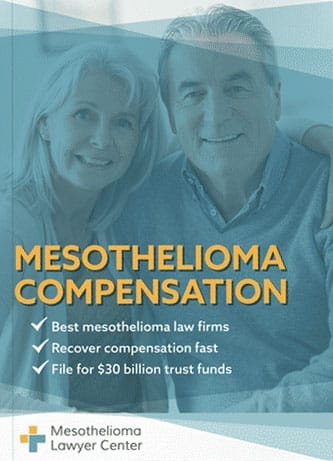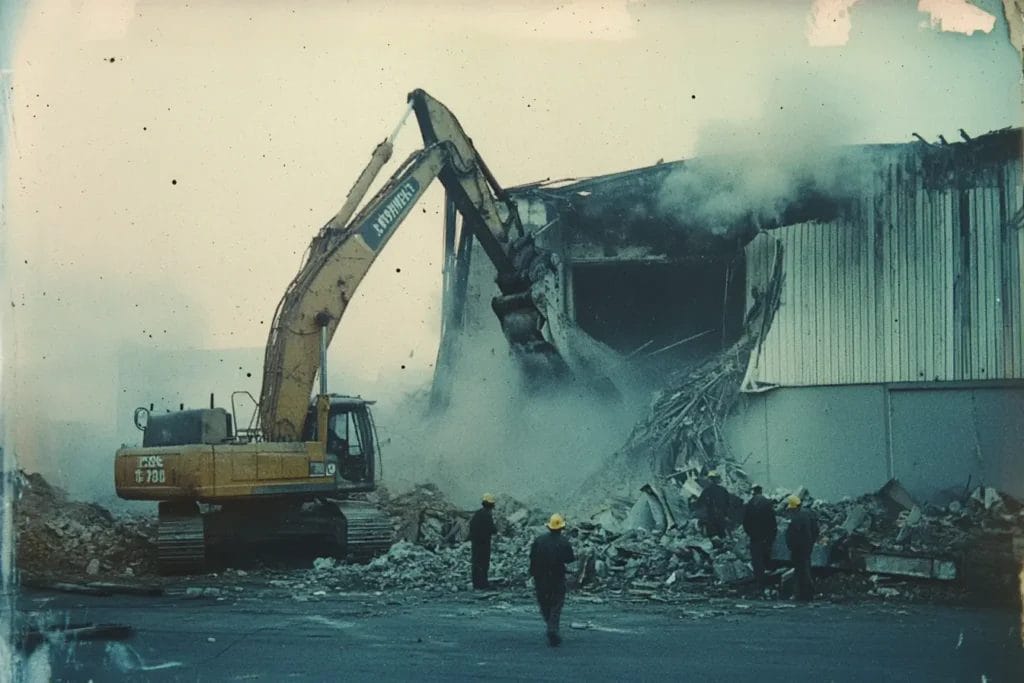Wisconsin mesothelioma lawyers help these victims and their families get justice and compensation from the companies responsible. Wisconsin ranks high among states for asbestos-related deaths.
If you or a loved one suffer from mesothelioma, asbestos-related lung cancer, or asbestosis, you may qualify for substantial compensation. Currently, there is over $30 billion in asbestos trust funds, awaiting those who’ve been diagnosed with an asbestos illness. We invite you to fill out our form today for a free Financial Compensation Packet, filled with information about experienced mesothelioma lawyers in Wisconsin, how to get paid in 90 days, how to file an asbestos trust fund claim, and much more.


FREE Financial Compensation Packet
- Info on law firms that will recover your HIGHEST COMPENSATION
- Learn how to get paid in 90 days
- File for your share of $30 billion in trust funds
We are pleased to offer assistance to residents in all Wisconsin cities and towns, including:
Milwaukee, Madison, Green Bay, Kenosha, Racine, Waukesha, Oshkosh, Eau Claire, Janesville, West Allis, Appleton, La Crosse, Sheboygan, Wauwatosa, Fond Du Lac, New Berlin, Wausau, Brookfield, Greenfield, Beloit, Franklin, Menomonee Falls, Oak Creek, Manitowoc, West Bend, Sun Prairie, Superior, Stevens Point, Mount Pleasant Village, Fitchburg, Neenah, Caledonia Village, Muskego, De Pere, Mequon, Grand Chute, South Milwaukee, Pleasant Prairie, Germantown Village, Menasha Town, Onalaska, Cudahy, Wisconsin Rapids, Marshfield, Onalaska, Howard Village, Middleton, Ashwaubenon, Beaver Dam, Menomonie, Kaukauna, Watertown, Menasha, Weston Village, Bellevue, Hartford, Greendale, Whitefish Bay, Allouez, Chippewa Falls, Pewaukee, Shorewood, Glendale, Hudson, Stoughton, Fort Atkinson, Waunakee, Plover Village, Salem, Baraboo, Brown Deer, River Falls, Two Rivers, Grafton Village, Suamico, Cedarburg, Whitewater, Richfield Village, Port Washington, Platteville, Appleton, Verona, Marinette, Harrison, Monroe, Greenville, Sussex, Burlington, Little Chute, Portage, Lisbon, Elkhorn, Sparta, Merrill, Somers, St. Francis, Oregon Village, Reedsburg, Shawano, Tomah, and more.
Wisconsin Asbestos Facts and Statistics

- Between 1999 and 2017 there were 6,815 asbestos-related deaths in Wisconsin.
- The majority of these were in urban areas, with Milwaukee and its surrounding areas having the most fatalities.
- The majority of asbestos-related deaths in Wisconsin were mesothelioma victims, followed by asbestosis victims.
- Per the Wisconsin Department of Health Services, pipefitters, plumbers, and steamfitters are the most frequently recorded occupations that led to asbestosis deaths.
- Almost 90% of all Wisconsin mesothelioma cases are caused by prolonged exposure to asbestos.
Mesothelioma Statistics: A Global and U.S. Perspective
In 2020, over 30,000 people worldwide were diagnosed with mesothelioma, a severe and aggressive form of cancer. Unfortunately, the condition claimed more than 26,000 lives globally within the same year.
On the domestic front, approximately 3,000 individuals in the United States received a mesothelioma diagnosis annually. The average age for a diagnosis is notably higher, with most patients being around 72 years old.
Wisconsin’s Mesothelioma Impact
Focusing on the U.S., Wisconsin stands out with a notably higher mesothelioma death rate. From 1999 to 2015, this state reported a significant number of fatalities from the disease, with the rate varying between approximately 11 to 14 deaths per million people. Furthermore, data from the Wisconsin Occupational Health Program highlights that a striking 88% of the deceased were aged 60 and older, indicating a pronounced impact on the older population.
Overall, these statistics underline the global and national burden of mesothelioma, spotlighting regions and demographics disproportionately affected by this challenging illness.
What is Asbestos and Mesothelioma?
Asbestos is a natural mineral once used heavily in many industries like construction and manufacturing. It is fibrous and can shed tiny fibers when handled or as it deteriorates.
In the past, most companies failed to protect workers from these fibers. When workers without safety gear worked near asbestos, they were at risk of inhaling or ingesting asbestos fibers. Inside the body, the asbestos fibers cause damage that can lead to illnesses decades later:
Common Symptoms of Mesothelioma
Mesothelioma symptoms often appear many years after a person has been exposed to asbestos. This extended latency period means that initial signs can be subtle and easily mistaken for other conditions. Here’s what to watch for:
- Persistent Fever: A prolonged and unexplained fever is an early indicator that something might be wrong.
- Chronic Cough: Look for a cough that lingers and doesn’t seem to improve with time or treatment.
- Fatigue: A constant feeling of tiredness or exhaustion that persists despite adequate rest.
- Shortness of Breath: Difficulty breathing can develop as the condition progresses.
- Night Sweats: Experiencing excessive sweating during sleep without an obvious cause.
- Unexpected Weight Loss: Shedding pounds without a change in diet or exercise routine is a red flag.
- Chest Pain: Discomfort or pain in the chest area, which may worsen with deep breaths.
In addition to these, a medical examination may reveal pleural effusion, where fluid accumulates in the lungs. This condition can further exacerbate symptoms such as difficulty breathing and chest pain.
The challenge with diagnosing mesothelioma is that these symptoms overlap with other diseases like lung cancer or pneumonia. Therefore, if you suspect asbestos exposure in your past, consult your healthcare provider for thorough testing. Seeking a second opinion can also be crucial for an accurate diagnosis.
Understanding Mesothelioma Transmission: Is it Contagious?
When considering whether mesothelioma can be transferred to others, it’s crucial to clarify that the disease itself is not contagious. One individual cannot directly pass mesothelioma to another. However, the risk comes from the transfer of asbestos fibers, which can indirectly affect others.
How can asbestos fibers be transferred?
- Secondary Exposure: While the disease doesn’t spread like an infection, it can stem from indirect contact with asbestos, known for causing mesothelioma. For instance, individuals working with asbestos-containing materials may carry these harmful fibers home on their clothing, skin, or hair.
- Household Exposure: Family members of those regularly exposed to asbestos may unknowingly come into contact with these fibers. This incidental exposure occurs when asbestos workers return home without proper decontamination measures, thus putting their loved ones at risk.
- Environmental Presence: Sometimes, asbestos fibers can linger in environments such as homes or workplaces that have been inadequately cleaned or repaired, leading to accidental exposure over time.
Precautionary Measures
To minimize the risk of secondary exposure, it’s vital for those who work with asbestos to follow strict safety protocols. This includes changing clothes and showering before returning home to reduce the chance of carrying fibers into domestic spaces.
In conclusion, while mesothelioma itself is not transmissible, the asbestos fibers that cause it can unintentionally be transferred to others, underscoring the importance of stringent protective measures for those handling asbestos.
Do I Have a Case for a Mesothelioma or Asbestos Claim?
The best way to determine if you have a valid mesothelioma case is to talk to an expert Wisconsin asbestos attorney. They can provide a free initial consultation to review your work and medical history.
If you have a diagnosis of mesothelioma, you are probably eligible to seek compensation. Most cases of mesothelioma are caused by negligent asbestos exposure. You could be eligible for:
- A personal injury lawsuit
- A wrongful death lawsuit
- An asbestos trust fund claim
- VA veteran benefits
For veterans, particularly those who served in roles with high asbestos exposure risk, such as shipyards or construction, there are specific paths to legal assistance. If your exposure occurred during your military service, you may qualify for benefits provided by the Department of Veterans Affairs (VA). It’s crucial to connect your illness with your service to access these benefits.
Additionally, if your asbestos exposure happened while working in civilian roles, like certain industries or locations known for asbestos use, you might have grounds to file a legal claim. This could include seeking compensation for medical expenses or other hardships caused by your condition. Understanding your work history and the nature of your exposure can significantly impact your eligibility and the type of legal action you can pursue.
By exploring these options, you can find the right path to get the support and compensation you deserve.
What Qualifications Should a Wisconsin Mesothelioma Attorney Have?
When searching for a Wisconsin mesothelioma attorney, it’s vital to consider specific qualifications to ensure you have expert representation. Here’s what to look for:
- Expert Knowledge on Asbestos Exposure
An attorney with in-depth understanding of asbestos-related products and their health risks is crucial. This knowledge helps in building a strong case by identifying responsible parties and showcasing the impact asbestos had on your life. - Medical Insight into Mesothelioma
The lawyer should be well-versed in the progression of mesothelioma. Understanding the disease’s complexities and the associated treatment costs enables them to advocate effectively for appropriate compensation. - Proven Negotiation and Litigation Skills
Experience in negotiating settlements and handling complex litigation is essential. A successful attorney should possess a track record of securing favorable outcomes for their clients, whether through settlement or trial. - Extensive Legal Experience with Asbestos Cases
Look for an attorney or firm with a history of dealing specifically with mesothelioma and asbestos-related cases. This specialization often indicates a greater chance of success due to familiarity and experience in these types of legal proceedings.
When choosing legal representation, ensuring these qualifications can make a significant difference in the outcome of your case. An attorney equipped with these skills and knowledge will be better prepared to fight for the compensation you deserve.
When Should You Contact a Mesothelioma Lawyer?
The optimal time to contact a mesothelioma lawyer is as soon as you suspect or have been diagnosed with the illness. Here’s why:
- Securing Evidence: Acting quickly ensures that crucial medical and occupational records are preserved. Over time, documents can be misplaced, witnesses may become unavailable, and details about exposure could fade from memory.
- Statute of Limitations: Legal time limits, known as statutes of limitations, restrict how long you have to file a lawsuit after being diagnosed. These periods vary by state, so prompt action is crucial to avoid missing out on potential compensation.
- Trust Fund Availability: Many companies have established trust funds to compensate individuals affected by asbestos exposure. However, these funds can be depleted over time. Initiating your claim early increases the likelihood of accessing these resources.
- Changing Laws: Legislation can shift, potentially impacting your right to pursue compensation. Consulting with a lawyer early means you can navigate any legal changes more effectively.
Why Early Action Matters
- Peace of Mind: Knowing legal proceedings are underway allows you to focus on your health and well-being.
- Comprehensive Support: An experienced lawyer will guide you through the complex legal landscape, ensuring you have the best chance of a favorable outcome.
Reaching out to a knowledgeable mesothelioma lawyer promptly can significantly influence the success and timing of your case, providing you with resources and support during a challenging time.
How Much Is My Mesothelioma Claim Worth?
Your claim’s value depends on individual factors. An experienced asbestos law firm can make a reasonable estimate of what you can expect based on:
- The severity of your illness
- Your past and current medical expenses
- Future expected medical expenses
- Home care costs
- Medical equipment costs
- Emotional and physical pain and suffering
Compensation also depends on the defendants involved and their degrees of liability. Most asbestos lawsuits end in settlements, which average $1 million to $1.4 million.
What Are the Costs Associated with Hiring a Mesothelioma Attorney in Wisconsin?
When considering legal assistance for mesothelioma cases in Wisconsin, understanding the financial aspects is crucial. Here’s a clear breakdown of what you can expect in terms of costs:
- Free Consultation: Initially, mesothelioma victims can typically receive a free consultation with Wisconsin attorneys. This is a chance to discuss your case and explore your legal options without any financial commitment.
- Contingency Fee Structure: Most mesothelioma lawyers operate on a contingency fee basis. This means you won’t face any upfront costs. The lawyer only receives payment if they successfully secure compensation for you. Their fee is usually a percentage of the settlement or award.
- No Upfront Legal Fees: You do not need to worry about paying legal fees in advance. This arrangement ensures that your financial risk is minimized as you pursue justice.
- Out-of-Pocket Costs: While there are minimal direct fees, you may encounter some out-of-pocket expenses. These might include specific costs like court filing fees or other minor case-related expenses, which are often nominal.
Overall, hiring a mesothelioma attorney in Wisconsin is financially accessible, as the primary costs are contingent upon the successful resolution of your case. This structure allows victims to seek justice without adding financial strain.
Where Was I Exposed to Asbestos in Wisconsin?
The vast majority of cases of prolonged exposure to asbestos come from workplaces. Many of Wisconsin’s industries used asbestos for decades and put workers at risk. These are some examples of industries and specific workplaces that harmed workers.
Automotive
The automotive industry long used asbestos in friction products, like brakes and clutches.
One of Wisconsin’s most prominent asbestos exposure cases occurred at Four Wheel Drive, a brakes manufacturing company in Clintonville. Several workers became ill in the early 80s, which resulted in a complaint call to the National Institute for Occupational Safety (NIOSH).
In 1987, NIOSH evaluated the facility and found asbestos in the brake products and all over the machinery and equipment.

Metal Manufacturing
The Ladish Company in Milwaukee was also associated with asbestos. As a metal manufacturer, numerous furnaces containing asbestos were in operation every day for years.
In addition, most of the pipes, machinery, and other equipment contained asbestos. Several workers at the Ladish company ended up with mesothelioma cancer and other asbestos-related illnesses.
Paper Manufacturing
Several paper manufacturing companies also exposed workers to asbestos. Paper manufacturing companies placed some of the highest risks for workers in Wisconsin.
Decades ago, Wisconsin was one of the leading paper manufacturing states. Wisconsin was home to several branches of leading paper manufacturing companies, such as Georgia-Pacific and Charmin.
Vermiculite Processing
Vermiculite is a natural, mined material that is processed into numerous products. Vermiculite is not harmful, but it is often found in deposits with asbestos.
The W.R. Grace vermiculite mine in Libby, Montana, notoriously shipped hundreds of thousands of tons of asbestos-contaminated vermiculite to processing plants nationwide. This lasted until approximately the 1990s.
At least two Wisconsin vermiculite plants received these asbestos-contaminated shipments. Workers at Koos processing plants in Kenosha and Racine risked asbestos exposure as a result. Nearby residents were also at risk of exposure. Today, the sites are considered safe.
Additional Wisconsin Workplaces That Used Asbestos
Other examples of specific workplaces that used asbestos and put workers at risk of exposure and illness include:
- Falls Paper and Power Company
- Kimberly-Clark Corporation
- Oconto Falls Tissue Inc.
- Scott Paper Company
- Scott Paper Mill
- Gardner Machine Company
- Hydro-Blast Corporation
- P. B. Yates Machine Company
- Rock River Generating Station
- Wisconsin Construction Company
- Wisconsin Power & Light Company
- Yates-American Machine Company
- Burlington Junior High School
- Carbonite Metal
- Helene Curtis
- Murphy Products
- Nestle Company Inc
- Nestle Usa, Inc.
- Case Threshing Machine Company
- Chicago Rubber Clothing Company
- Grace Evangelical Lutheran Church
- Horlick High School
- J I Case Threshing Machine Company
- J. Bashaw, Inc.
- J.I. Case Company
- J.I. Case Senior High School
- Jacobson Thomas Tire Company
- Lakeside Malleable Castings Company
- Mosinee Paper Mill
- Industrial Insulation Corporation of Wisconsin
- Valley Ready Mixed Cement Company
- Wisconsin Cabinet and Panel Company
- Falls Paper and Power Company
- Wisconsin Power and Light
- Wisconsin Construction Company
Wisconsin’s Asbestos Laws
Wisconsin’s asbestos laws include safety regulations and laws that impact how lawsuits proceed.
Asbestos Safety Regulations
The Wisconsin Department of Health Services enforces asbestos policies and laws in the state.
- Under Chapter 254 of the Wisconsin Environmental Health laws, prior to beginning an asbestos abatement project in Wisconsin, written notification must be provided to the state.
- Anyone working on an asbestos abatement project must be state-certified.
- The Wisconsin Department of Health Services can enter the area of an asbestos abatement project at any time to ensure that only qualified individuals are working on the project. Proof of qualification, such as a certification card, may also be asked for and must be produced.
- Public schools and buildings that were built using asbestos-containing materials (ACMs) must have an asbestos management plan in place at all times.
For more in-depth, detailed information and additional asbestos rules and regulations in Wisconsin, please contact the Wisconsin Department of Health Services at 608-266-1865.
Wisconsin Statute of Limitations on Mesothelioma Lawsuits

The statute of limitations places a time limit on filing mesothelioma and asbestos lawsuits:
- The statute of limitations when filing an asbestos-related lawsuit in Wisconsin starts within three years from the time the illness is first discovered or within three years from the date that it should have been reasonably discovered.
- Wrongful death lawsuits must also be filed within three years; however, the time starts according to the date of the victim’s death.
Construction Statute of Repose
The construction industry used asbestos more than almost any other in Wisconsin and other states. Unfortunately, a Wisconsin law limits asbestos lawsuits related to construction exposure.
Wisconsin has a construction statute of repose that places a hard limit of ten years for filing a personal injury lawsuit. It applies to any case in which the injury resulted from structural defects.
A court in 2020 interpreted this as applying to asbestos in some situations. A woman sued when her husband died from mesothelioma after working as a pipefitter building power plants. The Court of Appeals ruled that the statute of repose applied in her case.
Asbestos Claims Transparency Law
In May of 2013, the Wisconsin Assembly passed a new bill that requires plaintiffs who file an asbestos lawsuit to reveal any other companies they have sued. This is supposed to limit attorneys maximizing awards on several claims.
Supporters of the bill claim it’s also a way to allow a jury to understand just how many defendants are at fault for one individual’s asbestos-related illness, which may bring about higher award amounts for plaintiffs.
Those who opposed the bill indicated that it is another attempt to prolong asbestos-related cases until the victim dies.
Mesothelioma Treatment in Wisconsin
Find a physician specializing in asbestos-related diseases, which are still considered relatively rare in the medical world. The National Cancer Institute (NCI) makes the process easier by appointing worthy care centers and hospitals as NCI-designated facilities.
**The Froedtert Hospital in Milwaukee is an NCI-designated care center with researchers, physicians, cancer experts, and healthcare specialists focusing on mesothelioma and other asbestos-related diseases.
The NCI and the National Health Institute (NHI) recommend that asbestos victims seek treatment from a facility specializing in mesothelioma and other asbestos diseases.
When considering treatment options for mesothelioma, patients have a variety of avenues to explore. Treatments are generally categorized into those that manage symptoms and those that aim to control or eliminate the cancer.
Symptom Relief Treatments
- Paracentesis: A procedure for those with abdominal mesothelioma, involving the removal of fluid from the abdominal cavity using a needle.
- Thoracentesis: Used for patients with fluid buildup around the heart, involving fluid withdrawal from the chest.
- Pleurodesis: Designed for individuals with lung-related mesothelioma, this involves inserting a needle into the chest to manage fluid buildup.
Cancer Control Treatments
- Chemotherapy: Utilizes intravenous drugs to target and kill cancer cells, either alone or alongside surgery.
- Radiation Therapy: Employs radioactive energy to destroy cancer cells and can complement surgical efforts.
- Targeted Therapy: Focuses on attacking specific cancer cell molecules, often administered in pill form.
- Immunotherapy: Leverages the body’s immune system to fight cancer, and is being explored in clinical trials.
Personalized Treatment Plans
Doctors determine the most suitable treatment options based on factors such as:
- Cancer location
- Stage of cancer
- Overall health of the patient
Patients are encouraged to discuss their options thoroughly with their healthcare provider to weigh the benefits and drawbacks of each treatment path. Personal preferences and specific health considerations play a significant role in choosing the best approach.
By seeking care at an NCI-designated facility, patients can access a comprehensive range of treatment options tailored to their needs, supported by specialists who focus on mesothelioma and related conditions.
The NCI and the National Health Institute (NHI) recommend that asbestos victims seek treatment from a facility specializing in mesothelioma and other asbestos diseases.
When determining the most appropriate treatment for mesothelioma, several critical factors come into play.
How is Mesothelioma Typically Diagnosed, and Can It Be Misdiagnosed?
Diagnosing mesothelioma often poses a challenge, primarily because symptoms can take years to manifest after initial exposure to asbestos. Patients typically don’t exhibit immediate signs post-exposure, which complicates early detection.
Early Indicators of Mesothelioma:
- Persistent cough
- Unexplained fatigue
- Difficulty breathing
- Fever and night sweats
- Unexpected weight loss
- Chest discomfort
These symptoms may lead individuals to consult their doctors. Often, a routine examination and further tests reveal pleural effusion, which is the accumulation of fluid around the lungs—a sign that warrants closer investigation.
The Diagnostic Process:
- Initial Consultation: Discussing symptoms and any history of asbestos exposure with a healthcare provider is crucial.
- Imaging Tests: X-rays or CT scans help identify abnormalities in and around the lungs.
- Biopsies and Lab Tests: Tissue samples are examined to confirm the presence of cancer cells, specifically mesothelioma.
Potential Misdiagnosis:
Mesothelioma symptoms overlap with other respiratory conditions like lung cancer or pneumonia, leading to potential misdiagnoses. These shared symptoms can result in incorrect treatments initially, which underscores the importance of an accurate diagnosis.
Getting a Second Opinion:
If you’ve experienced asbestos exposure and suspect misdiagnosis, seeking a second opinion is often advisable. Consulting another specialist can confirm the diagnosis and ensure appropriate treatment is administered. This proactive approach could make a significant difference in managing and treating the condition effectively.
Key Influencing Factors
- Cancer Location: The exact site where the cancer has developed significantly impacts the treatment strategy. This can affect decisions about surgery, radiation, or chemotherapy techniques.
- Cancer Stage: Understanding whether the cancer is in its early or advanced stages helps doctors decide on aggressive treatment or more conservative management.
- Overall Health of the Patient: A patient’s general health and physical condition are crucial. Treatments can be demanding, so practitioners must consider whether the patient can tolerate specific therapies.
Combining Medical Insight and Patient Preferences
While these factors guide the medical team’s recommendations, the patient’s preferences and values are integral to the decision-making process. Each treatment option comes with its pros and cons, which are weighed in discussions between doctors and patients to tailor a plan that aligns with the patient’s quality of life goals and personal circumstances.
This collaborative approach ensures that the treatment plan is not only medically sound but also respects the patient’s autonomy and individual needs.
Great people. Helped my family through our meso diagnosis.
– Donald H.
Legal Help in Wisconsin
Don’t forget to fill out our form to get our free Financial Compensation Packet, filled with information on the experienced asbestos and mesothelioma attorneys in your area. Keep in mind that you may qualify for substantial compensation if you’ve been diagnosed with mesothelioma, asbestos-related lung cancer, or asbestosis. For additional assistance, contact us toll-free at 800-793-4540.

Paul Danziger
Reviewer and EditorPaul Danziger grew up in Houston, Texas and earned a law degree from Northwestern University School of Law in Chicago. For over 25 years years he has focused on representing mesothelioma cancer victims and others hurt by asbestos exposure. Paul and his law firm have represented thousands of people diagnosed with mesothelioma, asbestosis, and lung cancer, recovering significant compensation for injured clients. Every client is extremely important to Paul and he will take every call from clients who want to speak with him. Paul and his law firm handle mesothelioma cases throughout the United States.
References
- Environmental Working Group. (n.d.). Asbestos: Think Again.
Retrieved from: http://www.ewg.org/research/maps/deaths-due-asbestos-related-diseases - The National Institute for Occupational Safety and Health (NIOSH). (2023, January 20). Asbestos.
Retrieved from: http://www.cdc.gov/niosh/topics/asbestos/ - Insurance Journal. (2013, May 10). Wiconsin Assembly Passes Asbestos Lawsuit Bill.
Retrieved from: http://www.insurancejournal.com/news/midwest/2013/05/10/291577.htm - Environmental Working Group. (n.d.). Asbestos-Related Deaths in Wisconsin.
Retrieved from: http://www.asbestosnation.org/facts/asbestos-deaths/wi/ - U.S. Government Accountability Office. (2009, March). Koos Inc., 4500 13th Court, Kenosha, Wisconsin.
Retrieved from: https://files.gao.gov/special.pubs/gao-09-7sp/file154.html - U.S. Government Accountability Office. (2009, March). Koos Inc., 2000 DeKovan Avenue, Racine, Wisconsin.
Retrieved from: https://files.gao.gov/special.pubs/gao-09-7sp/file155.html - State of Wisconsin Court of Appeals. (2020, January 22). Nooyen v. Wisconsin Electric Power Company.
Retrieved from: https://asbestoscasetracker.com/wp-content/uploads/2020/01/Norbert-Nooyen-v-Wisconsin-Electric-Power-Company-decision.pdf
